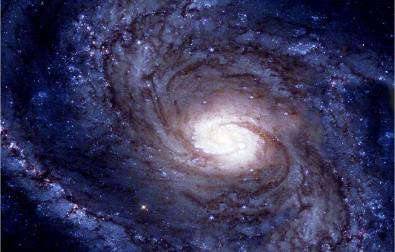For Teachers of Grades 5-8 (3 hours of instruction time)
Extended Version for Grades K-8 (4 hours of instruction time)
Maximum number of workshop participants: 30
Spinning planets, streaking comets, and shooting stars comprise this astrological adventure that will propel your students into orbit! Dance Educator, Harlan Brownlee from Kansas City, leads this participatory workshop that integrates dance with the characteristics and movement patterns of the planets and the sun in our solar system. Learn ways to help students apply and demonstrate their understanding of the gravitational force that keeps planets and moons in orbit, by creating dance sequences based on objects in the solar system including asteroids, comets, and meteors. You will enjoy this unique choreography experience!
View only
(The workshop) "Gave another avenue of learning that seems to greatly affect all learners"
-Kelly Donaldson,
Teacher Niagra, MO
Copyright S. Harlan Brownlee: No copying or other reproduction of this work allowed without the express written permission of the author, ©2014
Dances for an Expanding Universe
View the accompanying PowerPoint Presentation Grades 6 - 8
Video Samples From Dances for an Expanding Universe
In this clip, teachers are using the Name Game to learn and demonstrate their understanding of Astronomy Vocabulary. The terms they show are:
Milky Way
Crater
Gravity
Target Rocks
Solar Wind
Eclipse
Black Hole
In this clip, teachers are using the Name Game to learn and demonstrate their understanding of Astronomy Vocabulary. The terms they show are:
Impact Melt
Cosmic Rays
Light Years
Orbits
Apogee
Crater
In this clip, the teachers are choreographing movements that describe the planets. The teachers are asked to explain their movement choices and rational for the choreography they have created. A transcript follows:
HB: "Tell us what's going on while as you're doing this. Your planet was what?"
Teachers: "Jupiter"
HB: "Jupiter, okay".
Inge: "We're showing the largeness of Jupiter. It has full moons that circle Jupiter.
Observing Teachers: "Ahhhh".
Inge: "Jupiter also has winds that are moving in opposite directions..... And it (Jupiter) was a king (of the planets)."
HB: "Very nicely done".
In this clip, the choreographed movements for Jupiter are set to music. You will see the same movements from the clip to the left. Observe how the teachers show:
- The largeness of Jupiter
- The moons that circle Jupiter
- The winds that move in opposite directions
- The bow to the King of the planets, Jupiter.
